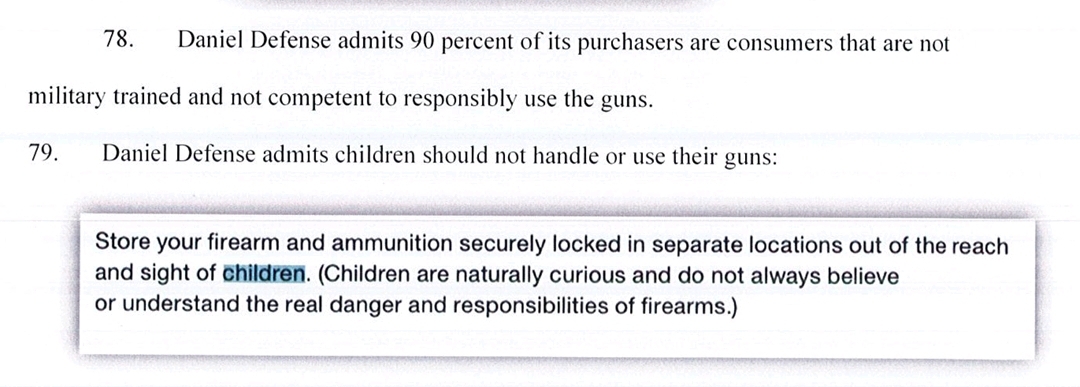The water rushed out of the mouth of the pitcher at a steep angle, missing the glass only a handspan below, and spread across the Commander’s desk.
“Oh shit! I’m sorry Commander.”
The Cadet put down the pitcher and glass and started looking around for something to sop up the water. Finding nothing, he attempted to corral the spreading puddle with his hands.
The Commander opened a drawer and pulled out a standard PVA zero-gravity hygiene towel. He handed it to the younger officer.
“Thank you, sir,” the Cadet said.
He ripped oven the plastic bag, unfolded the towel, and began mopping up the mess.
“Coriolis forces will get you every time” the Commander said, with no hint of annoyance in his voice.
“What sir?” The Cadet said, while continuing to deal with the spill.
The Commander continued affably.
“Coriolis forces. It an inertial force that affects objects in reference to rotating bodies. They are why, on Earth, hurricanes spin counterclockwise and southern hemisphere cyclones spin clockwise.”
“Yes sir.” The Cadet sounded as nervous as he looked, clearly shaken by the faux pas of not being able to handle the normally pedestrian task of pouring a glass of water in front of his new commanding officer.
“Cadet,” the Commander continued in an avuncular manner. “What do you know about this station?”
“I read what as provided in the assignment brief, sir.”
The Commander made a noise, somewhere between a sigh and a chuckle and continued.
“This station is located on one of the most extreme places in the galaxy that we can put living beings. This station floats on the surface of a brown dwarf. Brown dwarfs are often called ‘failed stars’ and are technically classified as ‘sub stellar objects.’ They are between a gas giant planet, like Jupiter, and a star, like our sun. They have more mass than gas giant, and consequently more gravity, but not enough to sustain nuclear fusion like a star. The brown dwarf we are on now has a mass roughly forty times that of Jupiter but only twelve-percent larger in diameter.”
The Cadet ’s eyes widened at this, the implications of what he just learned dawning on him.
“Then sir, how can we be here? The gravity should crush us.”
“Yes, it should, but this is a fast-spinning brown dwarf. This station is neutrally buoyant in the upper atmosphere of the dwarf were the rotational period is seventy-five minutes. We are experiencing enormous centripetal forces; so much so, that if the star rotated any faster, it might actually come apart. Those forces balance against the gravitational forces so that at the equator, you will experience one-point-one to one-point-two G’s. That’s well within a healthy human’s ability to handle.”
“But how does that explain” the Cadet paused and looked sheepish for a moment, “this.” He finished by waiving his hand over the damp spot on the desk in front of him.
“Like I said, Cadet, Coriolis forces. If we were exactly at the equator, they would not exist. Depending on the sub-stellar currents, there are perturbations in our equatorial path. We vary our position a little bit north or south of the equator. As we do, the Coriolis forces become more intense. The apparent gravity doesn’t always pull straight down.”
“Is that why I had trouble walking earlier?” Asked the Cadet.
“Precisely, but don’t worry you will acclimate to that as well in time. In the ancient days of an exclusively seafaring navy, sailors would have to get used to the constant rocking motions of the ships they served on. It was called ‘getting their sea legs’. Soon enough you will get your dwarf legs.”
The Cadet let out a brief coughing laugh.
“I think you need a better name for that, sir.”
The Commander grinned.
“You’re probably right. Let me give you some friendly advice Cadet.”
“Yes, sir.”
“Until you start to get a feel for the gravity variations, sit down to pee. My first day aboard station I was standing at the head and pissed entirely down my left leg.”
“This,” the Commander continued, addressing the wet towel and desktop. “Pales in comparison to having to report to attention soaked in piss from thigh to ankle.”
The Cadet’s face went pink as he tried to suppress a laugh. Such commanding officers who would try to ease in a Cadet on training assignments were rare. Cadets often told horror stories, passed down from generations of graduating classes and rumors traded at reunions, of senior officers who treated the young men and women with a single pip like little more than dirt. For a commanding officer to share both such valuable advice and a self-debasing anecdote was a refreshing change from what he was prepared to experience.
“Commander, if I may, why station people here at all?”
“Because, Cadet, this is a location of strategic importance.”
“But that’s what I don’t understand sir. This station is lightyears from any habitable system in the middle of a galactic dead spot.”
The Commander leaned back in his seat, put his elbows on the armrests, interlaced his fingers, and rested his hands on his belly. He took a moment to size up the young officer sitting across the desk from him.
“You are familiar with the Alcubierre drive, are you not, Cadet?”
“Yes sir, it’s what drives faster-than-light ships.”
“Not exactly,” the Commander said.
“Faster-than-light travel is not possible in the strictest sense. All ships are still bound by relativistic physics. The Alcubierre drive distorts space-time around the ship so that the ship itself is traveling sub-light speed relative to the space that it is in. The ship, however, is traveling at super-luminal velocity relative to a stationary point of reference.”
“The net effect is faster-than-light travel between two points,” the Cadet replied.
“It’s often referred to as faster-than-light, and yes, for practical purposes it is, but understanding the functionality is important to understanding why this station, and the stations like it are of strategic importance.”
“How so, sir?”
“Tell me, Cadet, what do you know about how A-drives work?” The Commander believed deeply in the Socratic method. To do well, a man must be able to apply logic and think is way through any problem before him. This conversation presented a prime opportunity to see if the young officer before him could measure up to the challenge. The Commander began to take on a professorial demeanor.
The Cadet sat up straight in his chair, the perfect picture of the attentive student.
“Well sir, a ship contains a deuterium fueled high pressure laser fusion reactor. That reactor powers the sub-light drive and a supercollider. The supercollider creates strange matter, and that strange matter makes the ship go faster than light.” The Cadet quickly corrected himself. “The strange matter distorts space-time for an FTL jump.”
“Correct,” acknowledged the Commander. “What is the most important regulation when plotting a course using an A-drive?” The commander asked.
“An Alcubierre drive jump is not to be performed inside the heliopause of a star system.”
“Verbatim from the field manual,” the Commander said. “But can you tell me why.”
“Ummmm….” the Cadet droned. He was puzzled. He had been diligently trained to follow protocols, not question them.
“Think about what you are doing during a jump,” prompted the Commander.
“You are folding space time.”
“Using what?”
“Strange matter.”
“And that is doing what.”
“Creating gravitational bubble around the ship.” That last point sounded more like a question than a statement to the Commander.
“And…” the Commander’s voice dragged on the enunciation of the word.
“And if you create a space-time gravitational distortion in the orbital path of a planet you could disrupt the orbit of that planet.”
“Correct.” The Commander gave the word an approving tone. “That is why A-drive jumps are only allowed between systems, not within them. But between star system, how car can a ship jump?”
The Cadet thought for a second.
“To the next system, usually, never more than a few lightyears at a time.”
“Yes,” the Commander said. “But again, why?”
“Fuel capacity. It takes an enormous amount of fuel to power the A-drive supercollider.” The Cadet practically spat out the answer.
“Yes, it does take a lot of fuel, and yes, that is a limitation, but theoretically a ship could carry more fuel and travel further.”
The Cadet was dismayed, he thought his second answer would be correct.
“When your ship is in a jump, what do your forward sensors display?”
“Nothing,” the Cadet said quickly.
“Why?”
The Cadet sat there with a glazed look on his face, staring at the Commander.
“Tell me about long range sensor systems.” The Commander wanted to give the young man a chance to figure this one out.
“Well sir, there is radar and lidar.”
The Commander looked like he was about to say something. The Cadet wanted to prove to the Commander that he wasn’t stupid and rushed to finish his thought before the Commander had to give him another hint.
“Radar and lidar both use electromagnetic or light waves. If you are traveling faster than light, you are traveling faster than your sensors. You are flying blind.”
“You are flying blind,” repeated the Commander. “Exactly. So how do you know where you are going.”
“The ship’s course is determined before the jump from telemetry data provided by jump stations.”
“And welcome to a jump station, Cadet.” The Commander said beaming.
“Cadet, did you ever do one of those trust building exercises where one person wears a blindfold and has to negotiate an obstacle course using directions provided by a partner who can see?”
“Yes sir, that’s a frequent exercise when assigned to a new practice squad.”
“That, Cadet, is essentially the way interstellar navigation is conducted. Inside of its space-time bubble, a ship is blind. It navigates in short jumps through mostly empty interstellar space using telemetry data provided by jump stations that have highly accurate maps of local regions of space, only a few cubic lightyears in size.”
The Cadet felt like he should be taking notes. He was supposed to be reporting for his first training assignment but his it was more like the classroom time he had as a cadet. The Cadet noted the irony that the Commander’s causal lesson was far more informative the many of the formal lessons he had from his instructors
“Tell me, what do you know of the history of the Mississippi River?” The commander’s question was such as shift in topic from the field of interstellar navigation that it caught the Cadet off guard.
“Nothing, sir,” the Cadet replied quizzically.
The Commander shifted his weight and continued in a tone as though he were reminiscing.
“During the heyday of steamboat traffic on the Mississippi River, the river changed so much due to local weather conditions that one navigator could not know the entire river. Steamboat captains would bring aboard a navigator who knew the river between two ports to chart the course of the steamboat. At the next port, that navigator would disembark, and a new navigator would come aboard for the next length of river.”
The Cadet began to understand where this anecdote was going.
The Commander continued.
“Times have changed, the ships have changed, and this is not the Mighty Mississip, but the principle is similar. Each jump station maintains a careful watch of the objects in its region of space and can predict their trajectory with great accuracy. We plot courses through our region of space, provide that information to the ships that pass through our region of space, navigating them during their jump, and handing them off safely to the next jump station.”
“That makes sense, Sir, but why is this station of such strategic importance?”
“What is the regulation about A-drives in star systems? You said it earlier.”
“An A-drive jump is not to be performed inside the heliopause of a star system.”
“So, what is the best location to place a jump station to plot interstellar courses?”
“In interstellar space.”
The Commander and Cadet settled into an informal, conversational tone. This was not a commanding officer grilling a subordinate but experienced man, a mentor, passing on his knowledge and wisdom to the next generation.
“Rogue brown dwarfs are one class of interstellar object. They have no natural satellites and do not constitute part of a star system. They, along with rouge planets provide a location with natural gravity to establish a jump station in the interstellar medium. It is precisely because we are, how did you put it? ‘lightyears from any habitable system in the middle of a galactic dead spot’ that this station is strategically important. What is the average distance between stars?”
Once again, the Commander had a unique way of ending a thought with a question that seemed to be a non sequitur. The Cadet made a mental note to be prepared for these sudden shifts in conversation.
“I believe, sir, about five light years.”
“That’s the general answer given, but the more accurate answer, considering space in three dimensions, is roughly one star per cubic parsec. Jump stations placed in the interstellar medium between stars optimize our ability to navigate between systems. The number of interstellar rogue objects that have the right conditions to put a jump station on are rare enough that when we find one it is worth the risk of placing one there.”
Like this:
Like Loading...

















